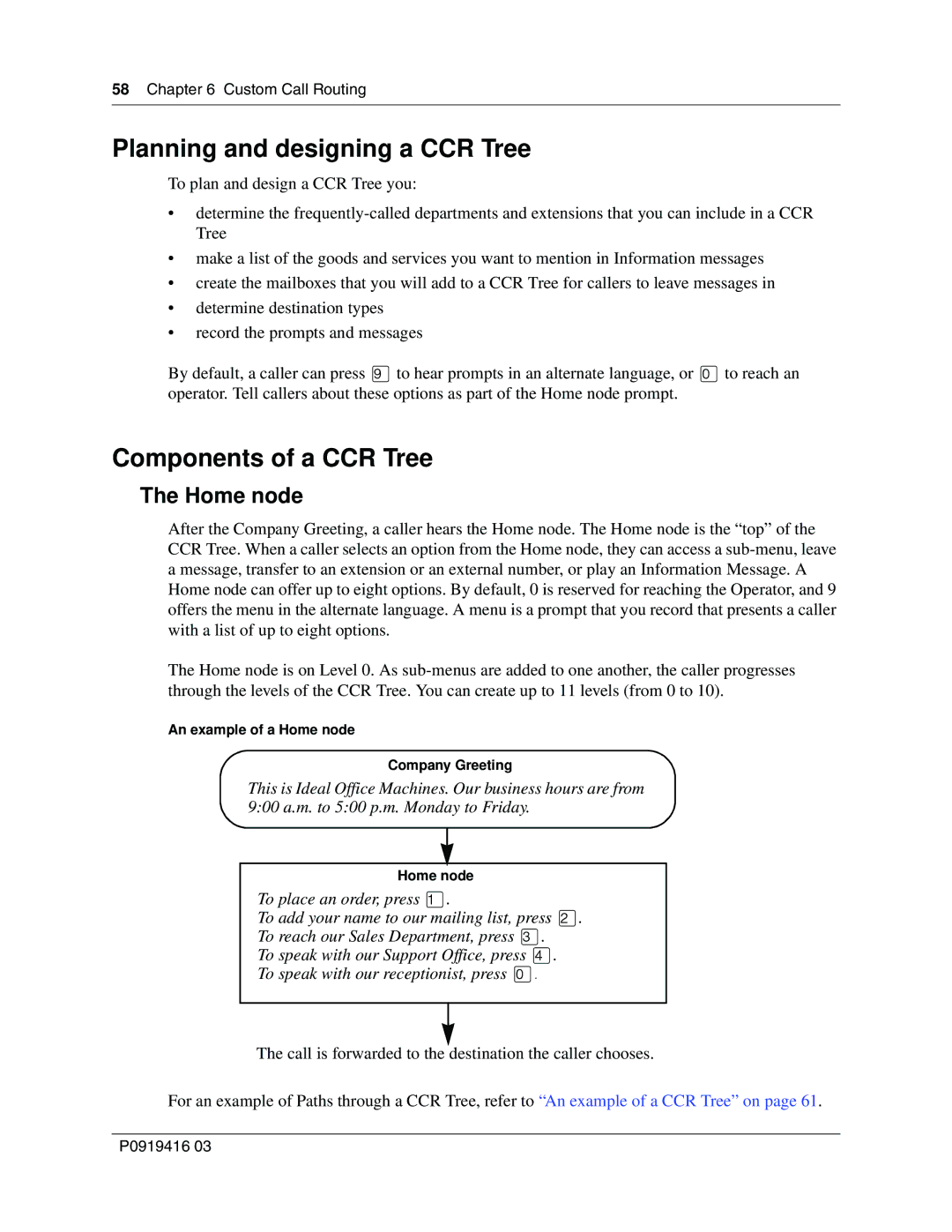
58 Chapter 6 Custom Call Routing
Planning and designing a CCR Tree
To plan and design a CCR Tree you:
•determine the
•make a list of the goods and services you want to mention in Information messages
•create the mailboxes that you will add to a CCR Tree for callers to leave messages in
•determine destination types
•record the prompts and messages
By default, a caller can press ·to hear prompts in an alternate language, or ‚to reach an operator. Tell callers about these options as part of the Home node prompt.
Components of a CCR Tree
The Home node
After the Company Greeting, a caller hears the Home node. The Home node is the “top” of the CCR Tree. When a caller selects an option from the Home node, they can access a
The Home node is on Level 0. As
An example of a Home node
Company Greeting
This is Ideal Office Machines. Our business hours are from 9:00 a.m. to 5:00 p.m. Monday to Friday.
Home node
To place an order, press ⁄.
To add your name to our mailing list, press ¤.
To reach our Sales Department, press ‹.
To speak with our Support Office, press ›.
To speak with our receptionist, press ‚.
The call is forwarded to the destination the caller chooses.
For an example of Paths through a CCR Tree, refer to “An example of a CCR Tree” on page 61.
P0919416 03
